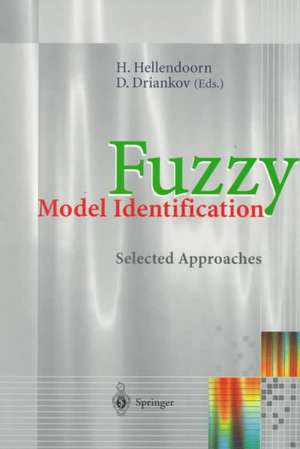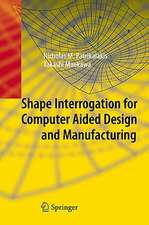Fuzzy Model Identification: Selected Approaches
Editat de Hans Hellendoorn, Dimiter Driankoven Limba Engleză Paperback – 16 oct 1997
Preț: 336.02 lei
Preț vechi: 420.02 lei
-20% Nou
Puncte Express: 504
Preț estimativ în valută:
64.30€ • 68.76$ • 53.61£
64.30€ • 68.76$ • 53.61£
Carte tipărită la comandă
Livrare economică 18 aprilie-02 mai
Preluare comenzi: 021 569.72.76
Specificații
ISBN-13: 9783540627210
ISBN-10: 3540627219
Pagini: 344
Ilustrații: XXI, 319 p. 20 illus.
Dimensiuni: 155 x 235 x 18 mm
Greutate: 0.52 kg
Ediția:Softcover reprint of the original 1st ed. 1997
Editura: Springer Berlin, Heidelberg
Colecția Springer
Locul publicării:Berlin, Heidelberg, Germany
ISBN-10: 3540627219
Pagini: 344
Ilustrații: XXI, 319 p. 20 illus.
Dimensiuni: 155 x 235 x 18 mm
Greutate: 0.52 kg
Ediția:Softcover reprint of the original 1st ed. 1997
Editura: Springer Berlin, Heidelberg
Colecția Springer
Locul publicării:Berlin, Heidelberg, Germany
Public țintă
Professional/practitionerCuprins
General Overview.- Fuzzy Identification from a Grey Box Modeling Point of View.- Clustering Methods.- Constructing Fuzzy Models by Product Space Clustering.- Identification of Takagi-Sugeno Fuzzy Models via Clustering and Hough Transform.- Rapid Prototyping of Fuzzy Models Based on Hierarchical Clustering.- Neural Networks.- Fuzzy Identification Using Methods of Intelligent Data Analysis.- Identification of Singleton Fuzzy Models via Fuzzy Hyperrectangular Composite NN.- Genetic Algorithms.- Identification of Linguistic Fuzzy Models by Means of Genetic Algorithms.- Optimization of Fuzzy Models by Global Numeric Optimization.- Artificial Intelligence.- Identification of Linguistic Fuzzy Models Based on Learning.
Textul de pe ultima copertă
This carefully edited volume presents a collection of recent works in fuzzy model identification. It opens the field of fuzzy identification to conventional control theorists as a complement to existing approaches, provides practicing control engineers with the algorithmic and practical aspects of a set of new identification techniques, and emphasizes opportunities for a more systematic and coherent theory of fuzzy identification by bringing together methods based on different techniques but aiming at the identification of the same types of fuzzy models.
In control engineering, mathematical models are often constructed, for example based on differential or difference equations or derived from physical laws without using system data (white-box models) or using data but no insight (black-box models). In this volume the authors choose a combination of these models from types of structures that are known to be flexible and successful in applications. They consider Mamdani, Takagi-Sugeno, and singleton models, employing such identification methods as clustering, neural networks, genetic algorithms, and classical learning.
All authors use the same notation and terminology, and each describes the model to be identified and the identification technique with algorithms that will help the reader to apply the presented methods in his or her own environment to solve real-world problems. Furthermore, each author gives a practical example to show how the presented method works, and deals with the issues of prior knowledge, model complexity, robustness of the identification method, and real-world applications.
In control engineering, mathematical models are often constructed, for example based on differential or difference equations or derived from physical laws without using system data (white-box models) or using data but no insight (black-box models). In this volume the authors choose a combination of these models from types of structures that are known to be flexible and successful in applications. They consider Mamdani, Takagi-Sugeno, and singleton models, employing such identification methods as clustering, neural networks, genetic algorithms, and classical learning.
All authors use the same notation and terminology, and each describes the model to be identified and the identification technique with algorithms that will help the reader to apply the presented methods in his or her own environment to solve real-world problems. Furthermore, each author gives a practical example to show how the presented method works, and deals with the issues of prior knowledge, model complexity, robustness of the identification method, and real-world applications.

















